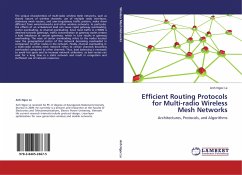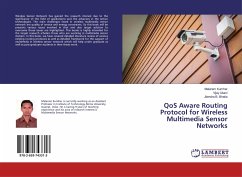
Energy Efficient Routing Protocols for Wireless Sensor Networks
Versandkostenfrei!
Versandfertig in 1-2 Wochen
47,99 €
inkl. MwSt.

PAYBACK Punkte
24 °P sammeln!
The latest progresses and the amalgamation of micro electro-mechanical systems technology, integrated circuit technologies, nanotechnology and microprocessor hardware, wireless communication, ad-hoc networking, distributed signal processing, and embedded systems have made the notion of Wireless Sensor Networks (WSNs). It enables the administrator to examine and act in response to a phenomenon in appropriate surroundings. The WSNs consist of large number of small, low-cost, multi-functional machines known as sensor nodes that have the capability to sense, process and communicate with each other...
The latest progresses and the amalgamation of micro electro-mechanical systems technology, integrated circuit technologies, nanotechnology and microprocessor hardware, wireless communication, ad-hoc networking, distributed signal processing, and embedded systems have made the notion of Wireless Sensor Networks (WSNs). It enables the administrator to examine and act in response to a phenomenon in appropriate surroundings. The WSNs consist of large number of small, low-cost, multi-functional machines known as sensor nodes that have the capability to sense, process and communicate with each other. The comfort of installation, economical cost, multifunctional, and ad-hoc character has illustrated WSN an interesting option for many applications, such as health-care applications, environmental monitoring, transportation, military practices, weather forecasting, safe-keeping applications, fire detection, real time tracking, and so on. WSNs have some constraints such as memory, bandwidth, hardware, and computation. The plan of this study is to recognize the limitations of WSN and investigate their unplanned act of routing protocols.












